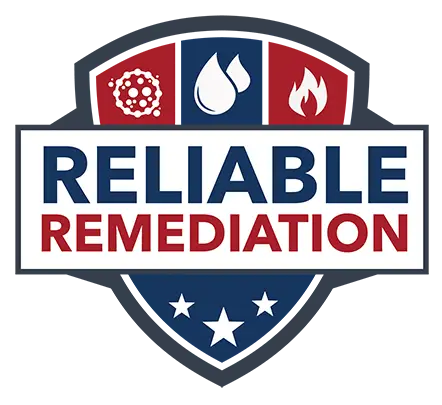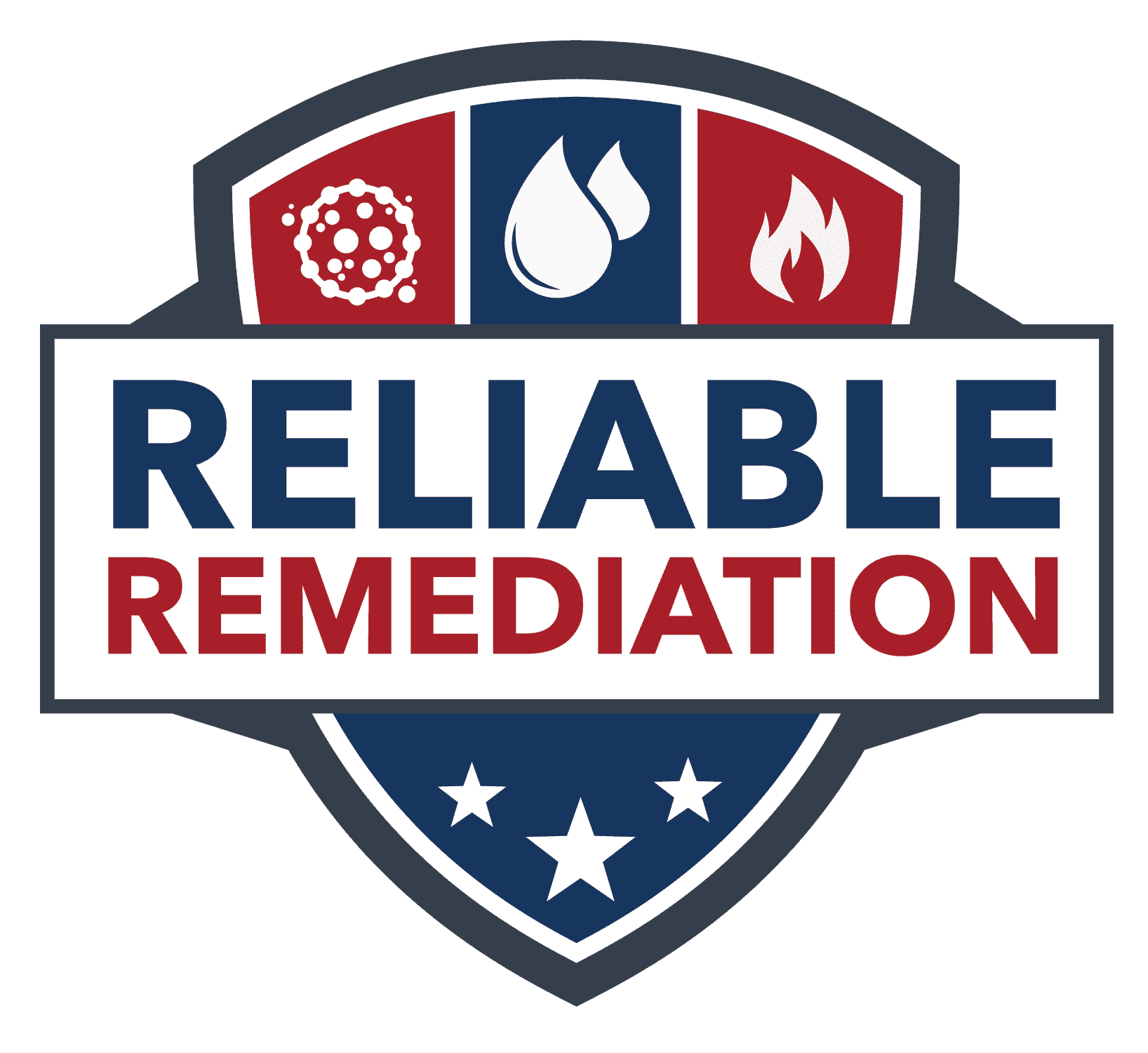Odor Elimination Pricing
The cost of odor elimination is affected by a number of factors and variables.
Pet
Urine Odor
Average Cost:
Non-Invasive $985 to $4,580
Invasive $1640 to $11,710
Animals – General Odor & Carcasses
Average Cost:
Non-Invasive $775 to $2,880
Invasive $2,580 to $8,295
Food – Pungent Spices or Oily, Greasy Smells
Average Cost:
Non-Invasive $1,795 to $6,830
Invasive $2,690 to $7,265
Pet
Urine Odor
Average Cost:
Non-Invasive $985 to $4,580
Invasive $1640 to $11,710
Animals – General Odor & Carcasses
Average Cost:
Non-Invasive $775 to $2,880
Invasive $2,580 to $8,295
Food – Pungent Spices or Oily, Greasy Smells
Average Cost:
Non-Invasive $1,795 to $6,830
Invasive $2,690 to $7,265
Microbial – Musty, Moldy Smells
Average Cost:
Non-Invasive $885 to $3,845
Invasive $2,255 to $11,340
Tobacco and
Cannabis Odors
Average Cost:
Non-Invasive $1,140 to $6,235
Invasive $3,275 to $13,840
Smoke – Wildfires, Fireplaces, & Kitchen Disasters
Average Cost:
Non-Invasive $2,135 to $5,610
Invasive $4,180 to $15,225
Microbial – Musty, Moldy Smells
Average Cost:
Non-Invasive $885 to $3,845
Invasive $2,255 to $11,340
Tobacco and
Cannabis Odors
Average Cost:
Non-Invasive $1,140 to $6,235
Invasive $3,275 to $13,840
Smoke – Wildfires, Fireplaces, & Kitchen Disasters
Average Cost:
Non-Invasive $2,135 to $5,610
Invasive $4,180 to $15,225
How Much Does Odor Elimination Cost?
The cost of odor elimination is affected by a number of factors and variables.
Proper odor elimination can cost anywhere from several hundred dollars to thousands of dollars. General guidelines require:
- Identifying and removing the source (as is possible)
- Cleaning contamination from surfaces
- Recreating the conditions of penetration with appropriate counteractants
- Sealing/Encapsulating (if necessary).
We’ll try to provide you with a general price range and list the factors and variables that impact the cost.
Are you affected by Nose Blindness?
A term used to describe the phenomenon of becoming accustomed to certain smells so that you no longer notice them. This can happen when you are exposed to a particular odor for an extended period of time. Your brain essentially tunes out the odor so that it no longer registers as strongly as it did initially.
Common causes of strong odors:
- Pet Urine
- Animals – General Odor and Carcasses
- Food – Pungent Spices, Grease, and Oils
- Microbial – Mildew and Mold
- Smoke – Wildfires, Fireplaces, Kitchens
The cost of odor elimination is affected by a number of factors and variables.
Proper odor elimination can cost anywhere from several hundred dollars to thousands of dollars. General guidelines require:
- Identifying and removing the source (as is possible)
- Cleaning contamination from surfaces
- Recreating the conditions of penetration with appropriate counteractants
- Sealing/Encapsulating (if necessary).
We’ll try to provide you with a general price range and list the factors and variables that impact the cost.
Are you affected by Nose Blindness?
A term used to describe the phenomenon of becoming accustomed to certain smells so that you no longer notice them. This can happen when you are exposed to a particular odor for an extended period of time. Your brain essentially tunes out the odor so that it no longer registers as strongly as it did initially.
Common causes of strong odors:
- Pet Urine
- Animals – General Odor and Carcasses
- Food – Pungent Spices, Grease, and Oils
- Microbial – Mildew and Mold
- Smoke – Wildfires, Fireplaces, Kitchens
Primary Factors that Affect the Cost of Odor Removal
Severity of Odor
The intensity and duration of the odor can affect the cost of odor elimination. More severe odors may require more extensive treatment and equipment, which can increase the cost.
Source of Odor The source of the odor can also impact the cost of odor elimination. For example, odors caused by mold or sewage can be more difficult to eliminate and may require specialized treatment.
Size of the Affected Area
The size of the area affected by the odor can also impact the cost. Larger areas will require more time and resources to eliminate the odor, which can increase the cost.
Type of treatment
There are different methods for eliminating odors, and the cost can vary depending on the method used. For example, using an ozone generator is typically more expensive than using a chemical deodorizer.
Location
The cost of odor elimination can also vary depending on the location. For example, if the affected area is in a difficult-to-access location, it may require more time and resources to eliminate the odor, which can increase the cost.
Professional vs. DIY Finally, the cost can vary depending on whether you hire a professional odor elimination company or attempt to eliminate the odor yourself. While DIY methods may be less expensive upfront, they may not be as effective and could lead to additional costs down the line.
We will explore some of the more common types of odors and situations:
Pets – Urine
Average Price for Urine Odor Removal
Non-Invasive – $985 to $4,580
Invasive – $1,640 to $11,710
Pets will “mark their territory” with their urine called spraying. This territorial urination will vary from male to female and the type of animal – breed, and pedigree are irrelevant. Urine is acidic in nature, but after 24-48 hours it transforms through a bacterial chemical reaction and decomposes to alkaline salt. These high alkali salts attract moisture and amplify odors.
Common Places to Find Urine Odors
- Corners, baseboards, door frames, and furniture legs.
- Carpets and area rugs – wool rugs are particularly susceptible (because it is an animal fiber).
- Around litter boxes, pet beds, and pet areas (scratching posts, etc.).
Variables That Affect the Removal of Urine Odors
How large of an area is affected? Is this repetitive behavior or from an “accident”? Can materials be cleaned and treated or do they need to be removed and replaced?
Common Issues Addressing Urine Odors
- Locating the source can be difficult with multiple layers of building materials e.g. carpet, pad, underlayment, subfloor, tack strip, and baseboard. Failure to find all affected areas can lead to ineffective and incomplete removal.
- Wool rugs and carpets are susceptible to the ammonia salts in the urine as they cause damage to the protein fibers in the wool and remove color. This cannot be corrected through cleaning.
- The repetitive nature of marking territory can cause the layering of odors and cause odors to be deeply embedded in materials.
- The heat and water from the carpet can actually amplify odors due to temperature and humidity – proper cleaning requires neutralization and deodorization treatments.
Pro Tips for Handling Urine Odors
- As soon as you notice your pet has had an accident, clean it up as quickly as possible. Use paper towels or a clean cloth to absorb as much urine as possible. If the urine has already dried, use a damp cloth to rehydrate it before cleaning.
- Enzymatic cleaners are specifically designed to break down the proteins in pet urine that cause odor. Apply the cleaner to the affected area and let it sit for the recommended amount of time before blotting it up with a clean cloth.
- If the odor persists, consider consulting a professional carpet cleaner or odor removal service. They have specialized equipment and techniques to remove the odor.
Animals – General Odor and Carcasses
Average Price for Animal Odor Removal
Non-Invasive – $775 to $2,880
Invasive – $2,580 to $8,295
Body oils from pets can also compound over time – unlike urine in specific areas this could cause odor issues throughout a space (with higher concentrations in areas where pets spend a lot of time or sleep). Animals seeking shelter, nesting places, and warmth can also cause odor problems in your building.
Common Places to Find Animal Odors
- Buildings with several animals can carry a general odor throughout.
- Common bedding areas.
- Attics, basements/crawl spaces, and wall and ceiling cavities where wildlife may enter. This could cause multiple issues including odors from urine/feces and carcasses.
Variables That Affect the Removal of Animal Odors
Are odors isolated to one area or do they affect many spaces? Can soft goods be cleaned and deodorized or will they need to be replaced? If the odors are from domestic pets, are the pets still in the building – will they remain? If this is a wildlife issue, have the animals been removed, and have their entrance been closed (excluded)?
Common Issues Addressing Animal Odors
- Identifying all affected areas and ensuring all source material has been removed can be one of the biggest challenges.
- Cleaning may cause discolorations.
- Considering prior cleaning treatments, new treatments with different procedures and chemicals may be in conflict.
Pro Tips for Handling Animal Odors
- Locate the source, and identify where the odor is coming from. Walk around your house and try to pinpoint the area where the smell is the strongest. It could be in your attic, basement, crawlspace, or other areas where wildlife may be able to enter.
- Clean pet bedding and furniture frequently used by pets.
- To help eliminate any lingering odors, you may want to use an odor absorber such as activated charcoal or baking soda. These products can help to neutralize the smell and improve the air quality in your home.
- Look for any signs of wildlife activity such as droppings, footprints, or scratches. If you are unable to find any physical evidence, you may need to set up cameras or traps to identify the culprit.
- Once you have identified an entry point, it is important to seal it up to prevent further intrusion. This could involve filling gaps or holes in walls, sealing vents or windows, or repairing any damaged areas of your home’s exterior.
Average Price for Food Odor Removal
Non-Invasive – $1,795 to $6,830
Invasive – $2,690 to $7,265
Cooking with pungent spices and frying foods (pan frying with oil or using a fryolator) can leave odors and residues throughout the cooking area and beyond. These odors can permeate soft goods – like curtains, upholstered furniture, and carpets – as well as affect building materials, hard furniture, and cabinets.
Common Places to Find Food Odors
- Kitchens and adjacent rooms.
- Inside kitchen cabinets and pantries.
- Lingering odors can affect an entire floor or all rooms in the building.
Variables That Affect the Removal of Food Odors
How large of an area is affected? Do some areas have layered oil that requires mechanical cleaning and other areas only the lingering odor? How long has the environment been exposed to the suspect spices, oils, greases, and smoke?
Common Issues Addressing Food Odors
- Cooking with oil – hot vaporized oils disperse and cool quickly on surfaces. This will create layering of oils and these layers will need to be mechanically removed from surfaces.
- Odors from spices may not leave a visible residue. This may cause difficulty as other “sources” may be found after the known source area is thoroughly cleaned. Residues in all affected areas must be thoroughly removed by cleaning to enable effective and complete deodorization.
Pro Tips for Handling Food Odors
- Use a range hood that vents outside. If you have a range hood in your kitchen, be sure to use it when cooking. It will help to vent the odors and smoke outside, preventing them from lingering inside your home.
- Open windows and doors. Another way to circulate the air and eliminate odors is to open windows and doors while cooking. This will help to create a cross breeze that can carry the odors outside.
- Clean as you go. To prevent the odors from lingering, clean while cooking. This includes wiping down counters and surfaces, washing dishes and utensils, and taking out the trash.
- Use natural odor eliminators, such as vinegar, lemon, and baking soda which can help to absorb and neutralize food odors. You can place bowls of vinegar or baking soda around your kitchen, or simmer a pot of water with lemon slices and other herbs to freshen the air.
Average Price for Microbial Odor Removal
Non-Invasive – $885 to $3,845
Invasive – $2,255 to $11,340
Microbial, mold, mildew, and musty odors are all generally the same thing (aka “that basement smell”). The odors all come from microbial volatile organic compounds (mVOCs) and are created during the active growth of mold. These mVOCs are created by the growing mold as a defense mechanism against other microbes around them. The most common health effect of mVOC exposure is eye and upper-airway irritation.
Common Places to Find Musty Odors
- Humid and damp basements and crawl spaces.
- Bathrooms and kitchens (rooms with exposure to the most moisture and water).
- Closets where damp clothing or footwear may be kept with little light and ventilation.
Variables That Affect the Removal of Microbial Odors
How long have building materials been subject to active growth? After mold removal has taken place – do porous materials still have an odor? How many soft goods (upholstered furniture, curtains, carpets and pad etc.) have been affected?
Common Issues Addressing Mold Odors
- Arresting or altering the environment leading to microbial activity must be addressed. Maintaining relative humidity between 40-50% RH stopping additional sources of moisture or water intrusion.
- Laundering and cleaning soft goods may need to be repeated to ensure complete odor removal.
Pro Tips for Handling Microbial Odors
- If the musty odor is caused by excess moisture, such as a leaky pipe or a damp basement, you’ll need to address the source of the moisture before trying to eliminate the odor. Fix any leaks, improve ventilation, and use a dehumidifier to reduce humidity levels.
- Opening windows and doors can help increase ventilation and reduce musty odors. You can also use fans or dehumidifiers to circulate air and reduce humidity levels. NOTE: Do not use fans and air movers if there is visible microbial growth. This could cross-contaminate the area and create more problems.
- Remember, prevention is key to avoiding musty odors. Keep your home well-ventilated, fix leaks and moisture problems promptly, and regularly clean and dry areas that are prone to dampness.
Average Price for Tobacco/Cannabis Odor Removal
Non-Invasive – $1,140 to $6,235
Invasive – $3,275 to $13,840
Environmental tobacco smoke (ETS) residue, also known as thirdhand smoke, refers to the residual tobacco smoke that remains on surfaces such as carpets, upholstery, clothing, and walls after the cigarette or other tobacco products have been smoked. Environmental tobacco smoke and its residue can cause respiratory problems, skin irritation, headaches, and some studies suggest an increased risk of cancer. There is less information regarding the health effects of cannabis smoke residue, but the “skunky” smell left behind can be difficult to remove and may cause irritation.
Common Places to Find Tobacco/Cannabis Odors
- Rooms where smoking takes place or places where smokers congregate and spend a lot of time.
- Smoke and their residual odors can spread to adjacent rooms.
- Soft goods like clothing, carpet, and upholstered furniture often hold these odors.
Variables That Affect the Removal of Tobacco/CannabisOdors
Whether seen or not, residues in all affected areas must be mechanically cleaned prior to thorough deodorization. The larger the affected area and the more contents that are affected will increase the amount of time and materials needed to perform this cleaning.
Common Issues Addressing Tobacco/CannabisOdors
- Some materials e.g. plastics and fiberglass can be permanently stained (yellowed) and may need to be replaced.
- During the cleaning process, people, pets, and plants should not be present in the area being treated.
Pro Tips for Handling Tobacco/Cannabis Odors
- Ventilate the area, by opening windows or using exhaust fans to increase air circulation and remove the smoke residue from the room.
- Wash clothing, curtains, and linens in a washing machine using hot water and detergent.
- Some recommend using an air filter or HEPA filter will help, but some tobacco and cannabis smoke particles are too small to be filtered out (0.01 to 1 micron in size and HEPA filters filter down to 0.3 microns).
Average Price for Smoke Odor Removal
Non-Invasive – $2,135 to $5,610
Invasive – $4,180 to $15,225
When wildfires occur, smoke can travel long distances and affect populations far from the immediate fire zone. Homes close to the wildfires or in the direct path of smoke plumes are likely to experience more significant smoke impacts than those farther away often affecting millions of people and their property.
The smell from a fireplace or a kitchen nightmare can linger long after the fire has gone out. This can cause respiratory issues, irritation of the eyes, nose, and throat, leading to symptoms such as watery eyes, sore throat, and nasal congestion.
Common Places to Find Smoke Odors
- If your home has a central heating system, the smoke odor can circulate through the air ducts and cause unpleasant smells throughout the house. Consider having your air ducts cleaned to eliminate these odors.
- On furniture and fabrics. Smoke and soot can settle on furniture, curtains, and other fabrics leaving behind an odor. Regular cleaning and laundering can help prevent this.
- Fireplaces and the chimney can accumulate soot and creosote over time, which can lead to odors. Make sure to clean the fireplace regularly to prevent this buildup. A professional chimney sweep can clean the chimney to remove any buildup and help eliminate odors.
Variables That Affect the Removal of Smoke Odors
Locating and removing the source is the first priority – sometimes the source can be in one place e.g. a fireplace. Other times it can appear to be everywhere e.g. furniture, clothing, and window treatments. What attempts have been made to rectify the issue? Can it be corrected and avoided in the future? Will the odor elimination process have to be invasive i.e. removing and replacing building materials?
Common Issues Addressing Smoke Odors
- The longer the odor persists or soot (often very fine and hard to see with the naked eye) stays in contact with building materials and soft goods – the more difficult the odor elimination process becomes.
- Novice attempts to clean some materials can actually make the situation worse.
Pro Tips for Handling Smoke Odors
- Identify the source of the smoke odor. Determine whether the smoke odor is coming from a fireplace, an exterior source, cooking, or some other source.
- Ventilate the area. Open windows and doors to allow fresh air to circulate and push out the smoke odor.
- Clean surfaces. Smoke particles will settle on surfaces like walls, ceilings, furniture, and carpets. Use a mild cleaning solution to wipe down these surfaces and remove the smoke odor. Be careful to use proper products and techniques – if not, you can ruin what you are trying to clean and it may not be salvageable.
- Wash fabrics. Smoke can also cling to fabrics like curtains, bedding, and clothing. Launder these items with a strong detergent and fabric softener to help remove the smoke odor. Consider a dry cleaner for higher-end items or a specialty soft goods cleaner.
- Replace the air filters in your HVAC system to ensure that the smoke particles are not recirculated through your home. Your system may also need to be cleaned.
- Consider professional cleaning services: If the smoke odor is particularly stubborn, consider hiring a professional cleaning service that specializes in smoke remediation.
It’s important to note that eliminating smoke odors can take time and effort, so be patient and persistent in your efforts to get rid of the odor.
It’s Easy to Get the Help You Need

Get an Evaluation

Receive a Customized Plan


